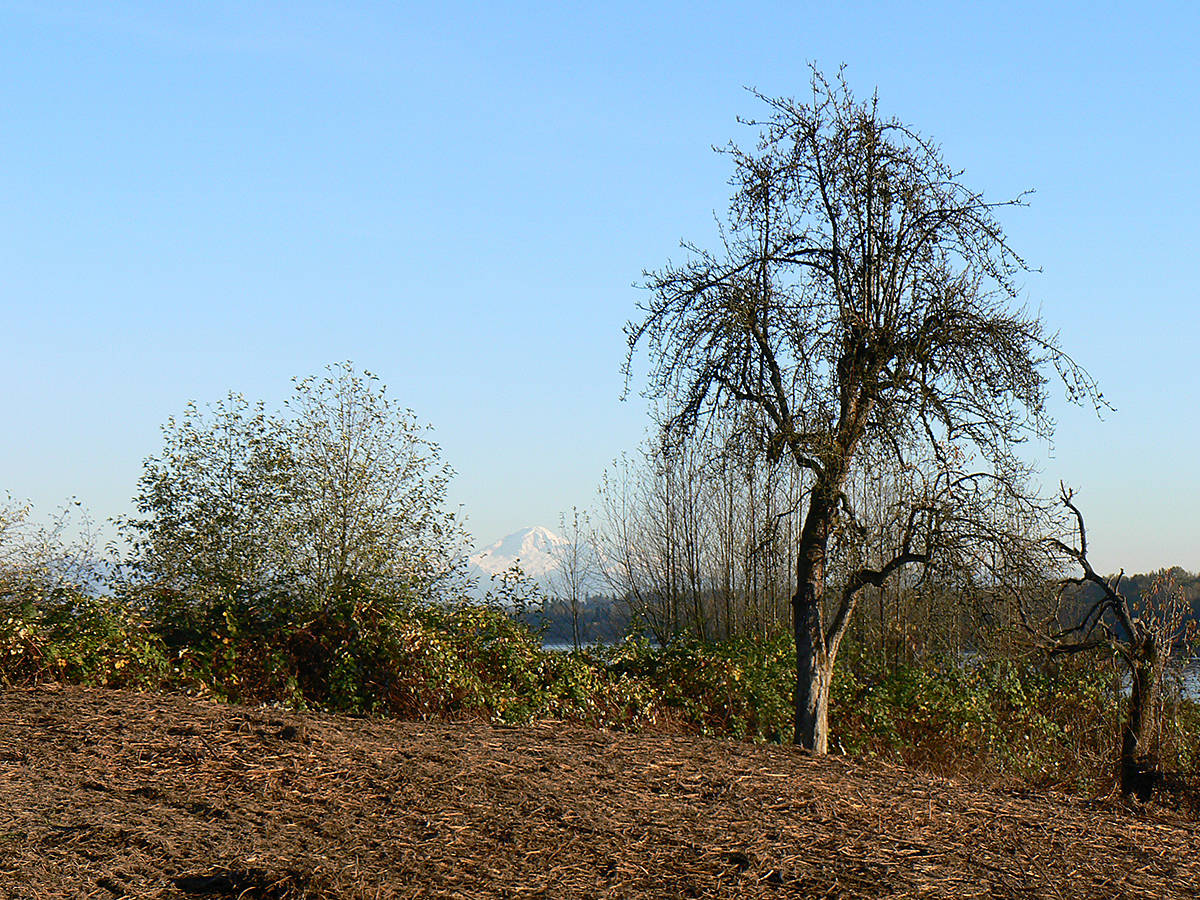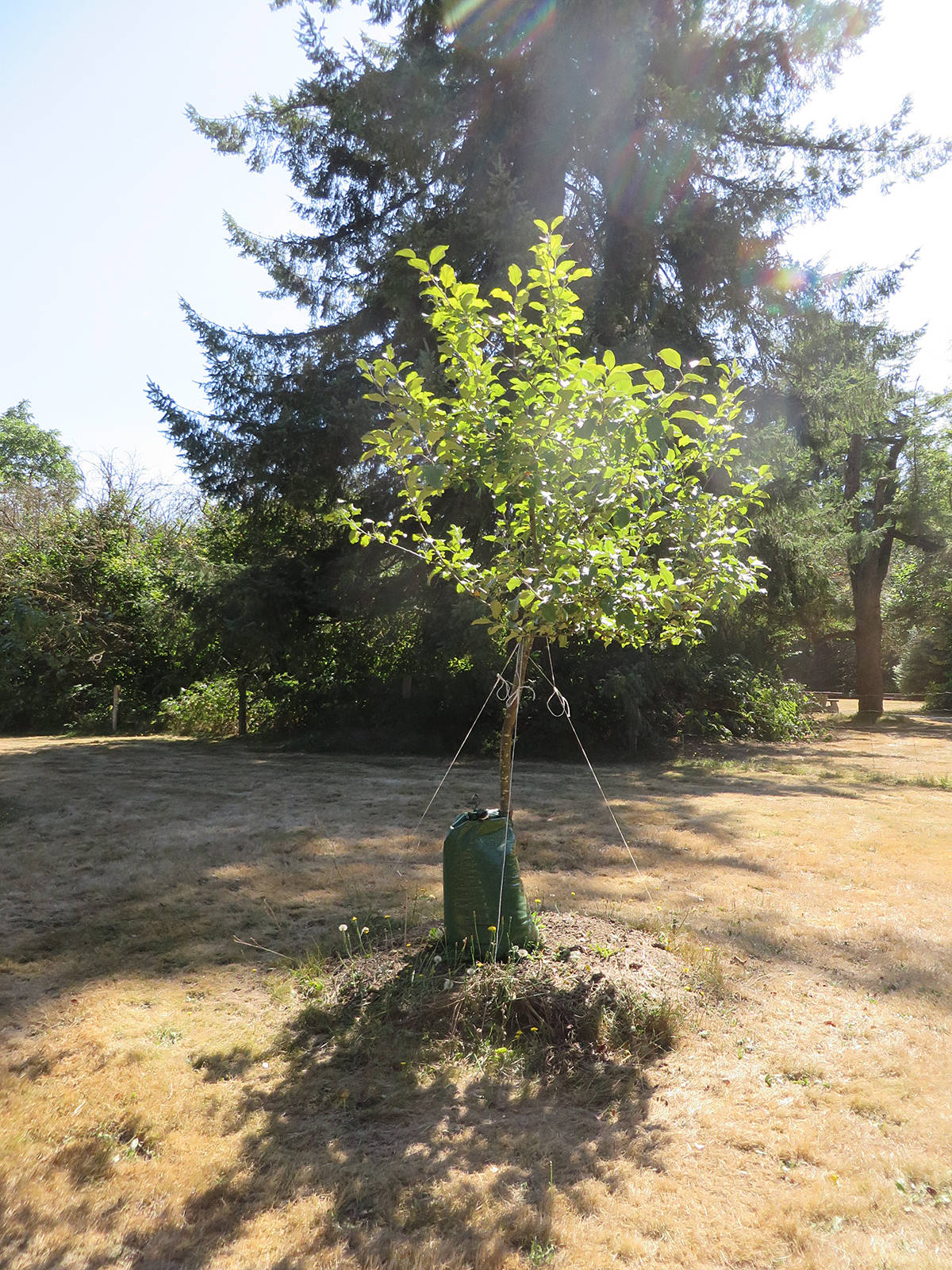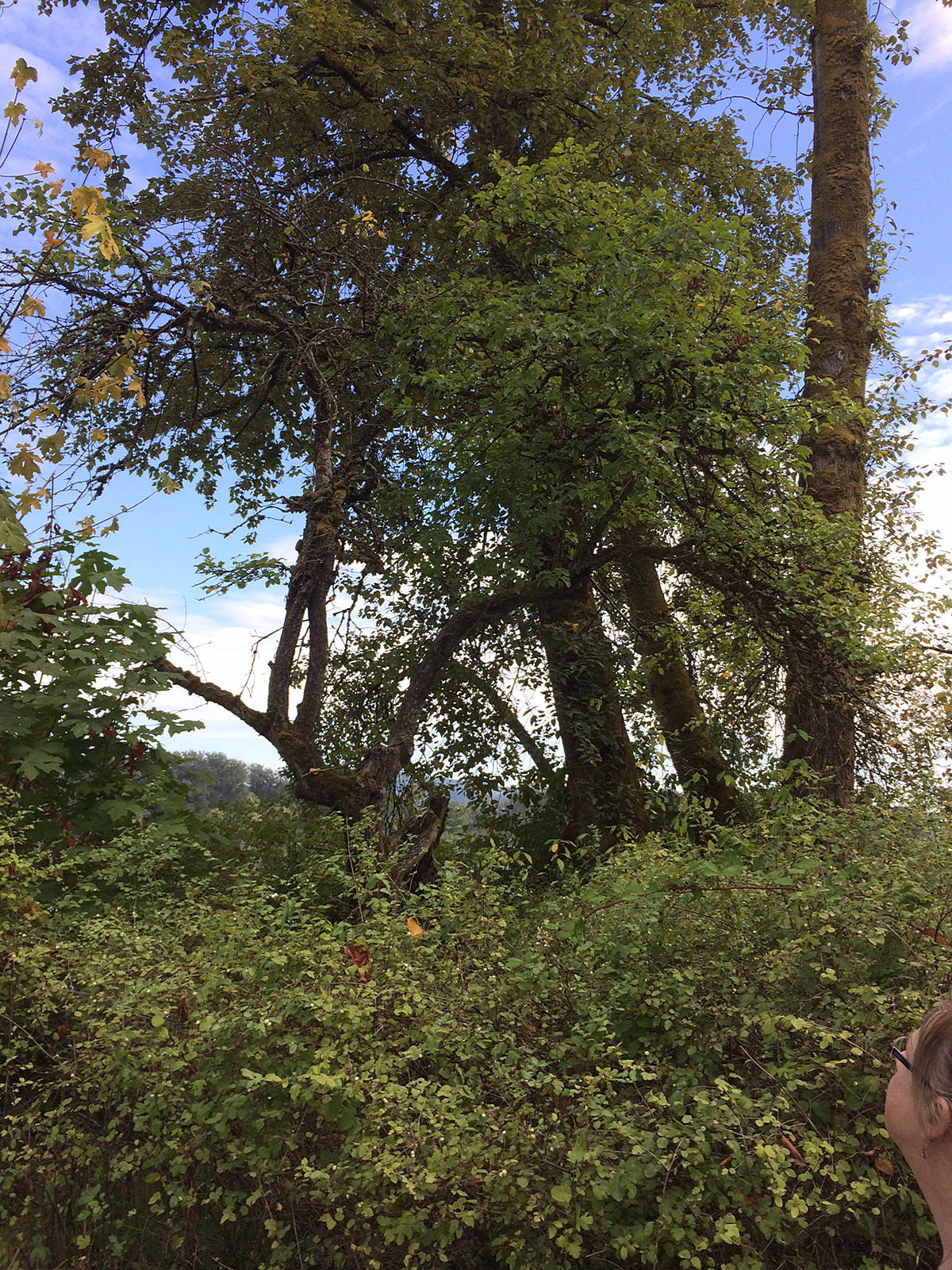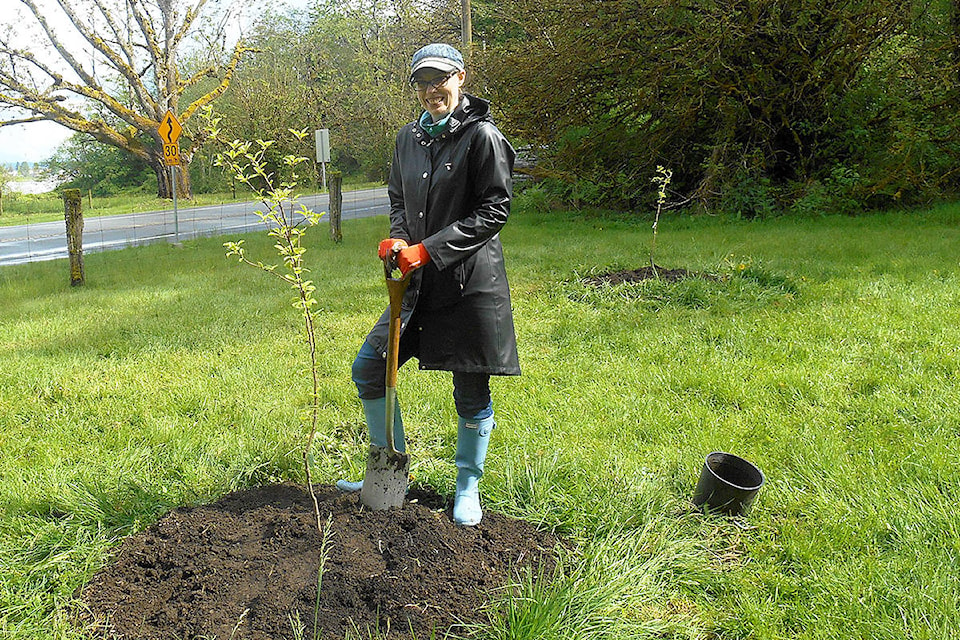by Bob Groeneveld
Special to the Langley Advance
Fruit trees are scattered through the alders, blackberries, and sundry scrub along the Fraser River west of Fort Langley.
They will be the honoured guests at Heritage Apple Day, an annual event being held in Derby Reach Regional Park this weekend.
The trees are the legacy of pioneer farmers who arrived from Europe with seeds, scions, and whole trees in the late 1800s.
Many of the fruit trees buried in the bushes at Derby Reach and along the Fort to Fort Trail are offspring of the originals – planted, grafted, many the result of decades of planned propagation, many just seeded haphazardly by birds or vermin.
A few of the original trees remain as thick, gnarled trunks with odd, sparsely leafed branches looking like ominous creations for a Hollywood Halloween scare-flick. A few seem cut and pasted out of a Dr. Seuss tale.
Some of the trees have been identified through diligent research, while others remain unknown.
“Apples are very strange,” explained Jeremy Smith, a former member of the Derby Reach/Brae Island Park Association board. He still works with the organization for the Apple Day celebration and helps preserve some of the heritage apples and pears found in the park.
“They’ve got very odd genetics,” Smith said.
“They don’t have a stable genetic transfer from one generation to the next. They do not breed true. They’ve got extra chromosomes and weird genetic make-up. If you grow an apple from seed, you don’t know what it’s going to be.”
To complicate matters further, he noted, “There are thousands of apple varieties. Tens of thousands. Out of those, there are only a few that are commercially useful or taste good, or have some other quality that people want.”
Only a few varieties do well in the Fraser Valley, which is, he said, “overall, a bit too wet for apples, and they tend to get fungal diseases and cankers. It’s not an ideal place to grow apples.”
But because of the importance of apples to their survival, the pioneers found varieties that would grow reasonably well.
Some of those early apple trees, like King, Transparents, Wolf River, and Winter Banana continue to eke out an existence in the park.
“Wolf River is an old, old variety,” said Smith. “Winter Banana was common here when we came in the 1970s. It was probably common in a lot of people’s gardens when you were growing up. You probably ate it.”
Smith, whose degree in botany is “from time immemorial,” is now retired from working in greenhouses and in housing.
“I’m not an expert, by any means,” he said, but he has been an gardener all his life, and working with plants has been one of his “lifelong themes.”
The plants in the park enticed him onto the DRBIPA board originally, and it keeps him involved.
He’s the man in charge of a small heritage orchard next to the old Houston farmhouse, explained current DRBIPA chair Joakim Nilsson. It’s just a handful of small trees bearing grafts from the heritage trees in the park.
The trees appear to be planted on mounds… because they are. The area is archaeologically sensitive, and instead of dealing with the massive expense and red tape involved in digging any kind of hole there, Nilsson said, noting that Smith helped the association by designing rings to hold soil so the trees could be planted above ground.
Smith is also interested in a project to copyright the name for a local pear that may constitute a currently unknown variety.
Because there is a splendid example of the pear at Derby Reach, the group would like to append that name to it.
“They used to call it the North Langley pear,” he said of the trees that grow along the south banks of the Fraser River from Surrey to the Matsqui dikes… and nowhere else, to anyone’s current knowledge.
“It’s associated with quite a number of the old homesteads,” he said.
“It’s a funny looking pear. Nobody knows what it is. We’ve had attempts to identify it, so the parks association started a little project to graft it and grow it on [to preserve the variety].”
Several grafts around the community have been successful, but it took some effort.
“We had trouble finding a graft that would work for it, and it turns out it is more like an Asiatic pear than a European pear. It’s origin is quite mysterious. We don’t know what it is.”
If they’re successful at copyrighting the name, then the next step will be to try and prove – or disprove – that it is a new, unrecognized variety. That will require a much more involved and difficult process.
What all the park’s old fruit trees have in common, other than being the reminders of another culture that once invaded this area to move past the fur trade and set the stage for today’s way of life, is that they have survived decades past a full century.
That is no mean feat for most fruit trees.
Well-tended apple trees might see their 100th birthday, if they are lucky, and most pears can expect half that.
But the trees planted by the early Derby Reach farmers, in some cases up to almost 150 years ago, were neglected for decades after the farms faded and before people with an acute sense of heritage recognized their worth and made some efforts at saving them.
This weekend the people who like to bring life back to old trees will be celebrating apples, and particularly the heritage apples that helped to build Langley.
The DRBIPA (they pronounce it “Dr. Bipa”) and Metro Vancouver Parks will be pulling out the stops with all sort of fun, apple-related things to do at the heritage Houston farm site on Allard Crescent on Saturday, Sept. 30, from 11 a.m. to 2 p.m.
Apples and celebrations have more in common than one might think at first blush.
Smith noted that the farmers planting those trees weren’t toiling solely in the belief that “an apple a day keeps the doctor away.”
Turning apples into hard cider is relatively easy, he explained, and a lot easier than finding a beer or watered-down whisky in a colony far from the amenities of their European origins.
One of the main things that people did with apples was to make cider, said Smith, “because all of these people… they would have had access to spirits and wine and beer [in theiir native countries], and a lot of the things to make them were not here. “
Everyone is familiar with the story of Johnny Appleseed, he said. But what many people don’t know is that he was spreading those apple seeds across the continent “because people wanted cider.”
Smith noted, “The first temperance movements in the United States were specifically directed against cider drinking, because it was such a problem. It was available. They didn’t have grapes. All you need is a couple of big stones or some kind of press, some stoneware containers, and you have an alcoholic drink.”
His pet project for Apple Day however, could be deemed a little more mundane than sprucing up a party with a sparkling beverage.
He’ll be peeling apples: “There’s an apple-peeling [table at the celebration] that kids love, and I love doing it, because the kids are fascinated. You know the old apple peelers? Most of the kids have never seen that. You put the apple on and the kids turn the handle and you get a cored apple spiral at the end of it. It’s a revelation to a lot of these kids.
“Last year we went through a hundred pounds of apples.”
Other activities planned for the celebration include participatory demonstrations of tasks routinely carried out by pioneers back in the day. There will be history tours, artists in the park, and live music.
And of course, there will be a chance to taste a variety of apple varieties.



